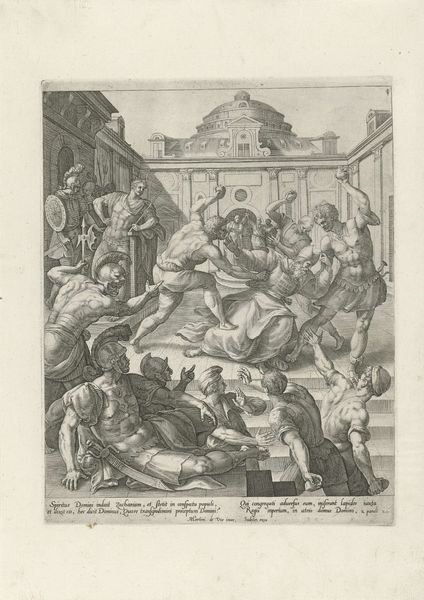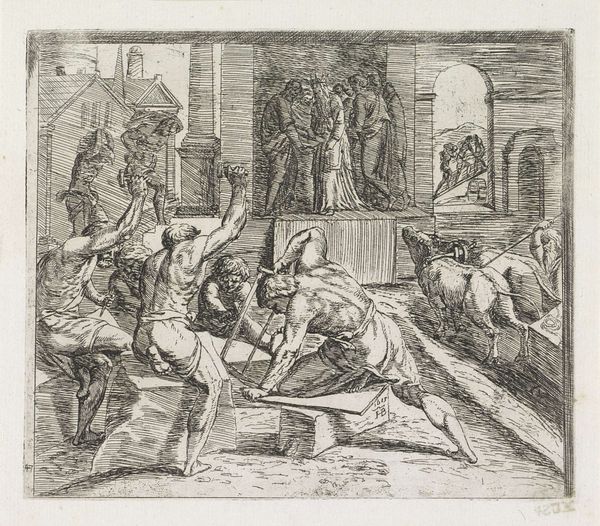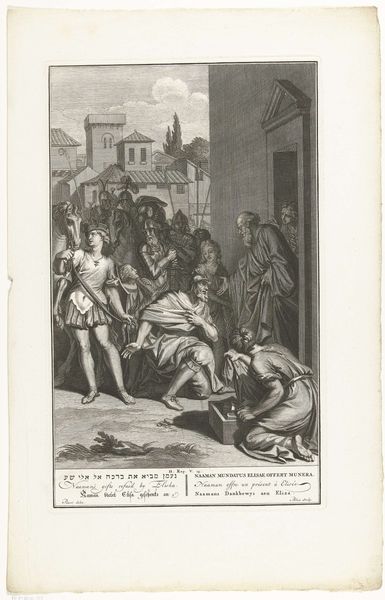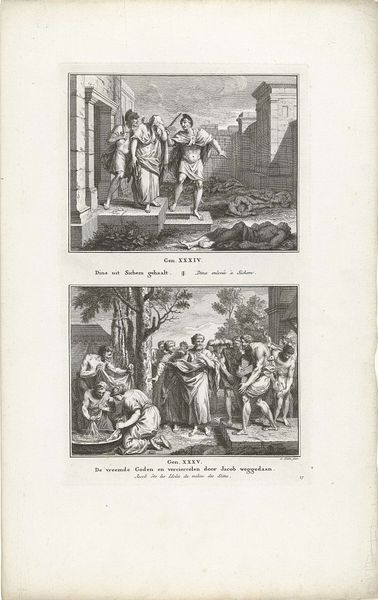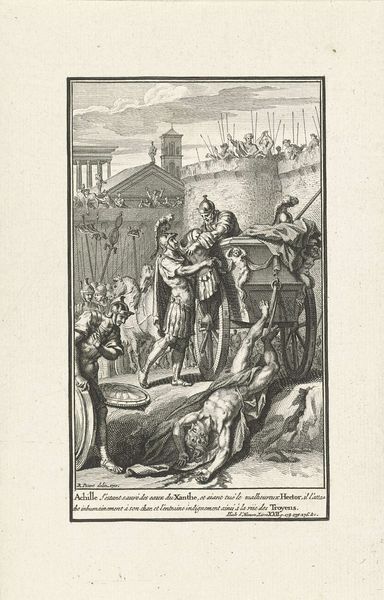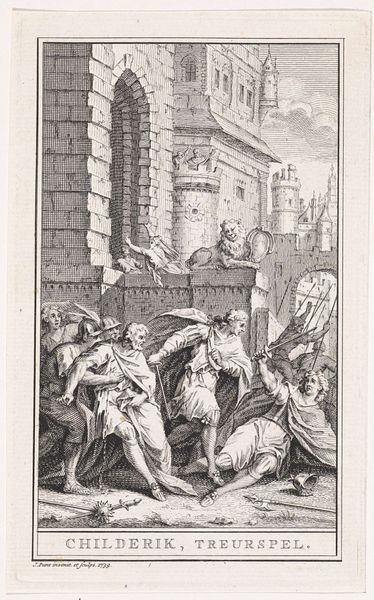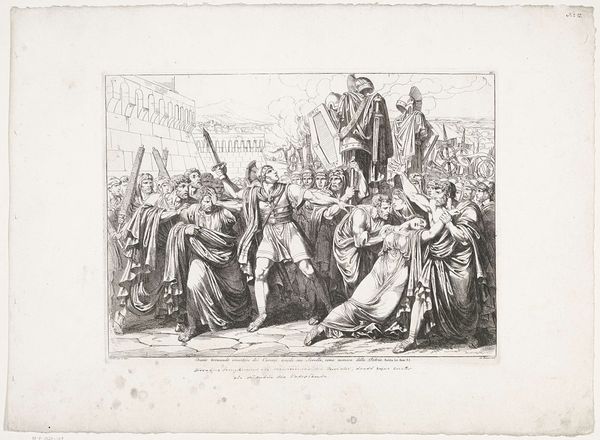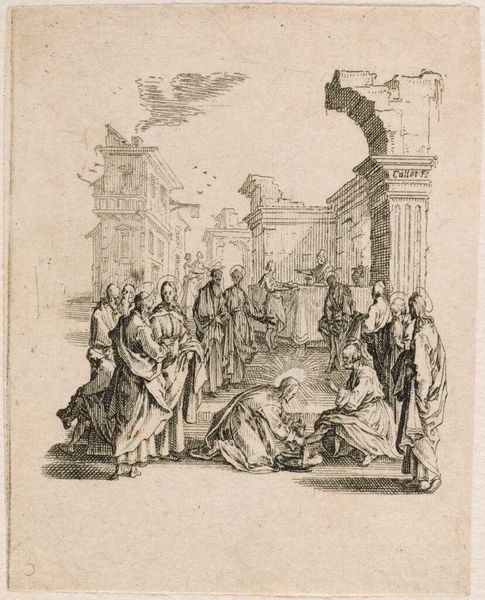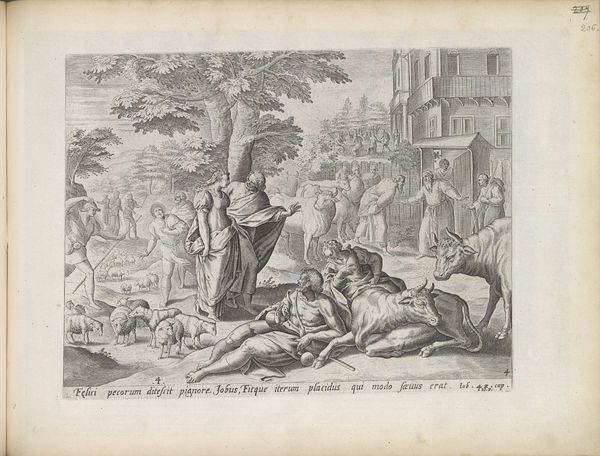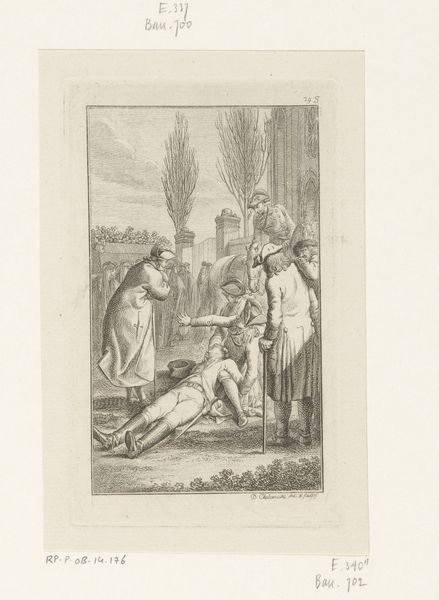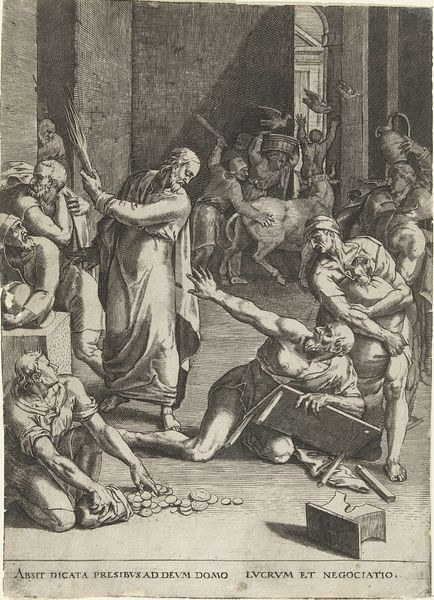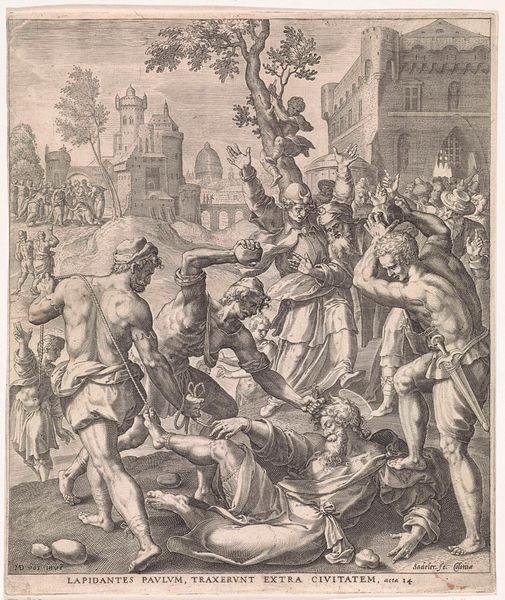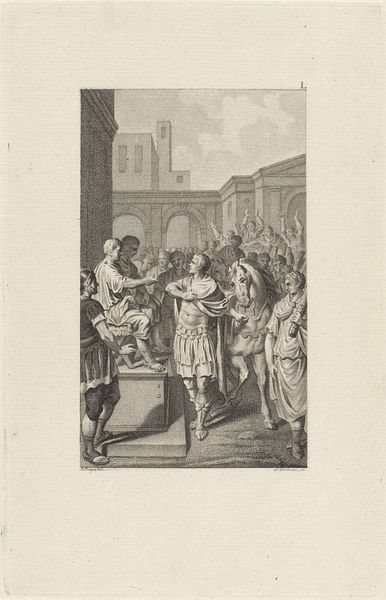
print, engraving
#
narrative-art
# print
#
figuration
#
history-painting
#
academic-art
#
engraving
Dimensions: height mm, width mm
Copyright: Rijks Museum: Open Domain
Editor: This engraving, “Bijbelprentjes 12 stuks. Naar J. Buys” attributed to Reinier Vinkeles, appears to depict a biblical scene. There's a palpable sense of tension; you can almost feel the weight of authority and impending violence. What story do you think it is telling? Curator: I see a story deeply entrenched in power dynamics and religious dogma, playing out against a backdrop of colonialism and the suppression of indigenous knowledge. The men with spears evoke images of Roman soldiers, instruments of imperial control. But who are they subjugating, and why? Understanding the specific biblical narrative is key to deconstructing how this image may reinforce certain biases. Editor: So, the narrative isn’t just about a biblical story, but also how it reflects historical power structures? Curator: Precisely. These images, disseminated as "Bijbelprentjes" or Bible prints, weren’t merely innocent illustrations. Consider their historical context: how were these images used to justify colonial exploitation, to portray certain groups as inherently inferior and thus deserving of conversion or even conquest? Look at how the figures are rendered. Who gets the heroic poses and who is forced into subservience? Editor: That’s a perspective I hadn’t fully considered. I was focused on the immediate scene, but I see what you mean, about who benefits and who is subdued in the historical portrayal of power and dominance. Curator: These prints were created within specific socio-political conditions and likely promoted certain ideological agendas. What we see on the surface—a religious scene— masks complex layers of social, racial, and gendered meanings that need interrogation. Who is telling this story, and whose interests are they serving? Editor: This has given me so much to consider beyond just the surface image; it invites you to think more deeply about the historical context and its lasting impact. Curator: Indeed. Recognizing how historical depictions perpetuate power imbalances helps us challenge these biases in contemporary society and think more critically about whose voices are being centered, and at whose expense.
Comments
No comments
Be the first to comment and join the conversation on the ultimate creative platform.
